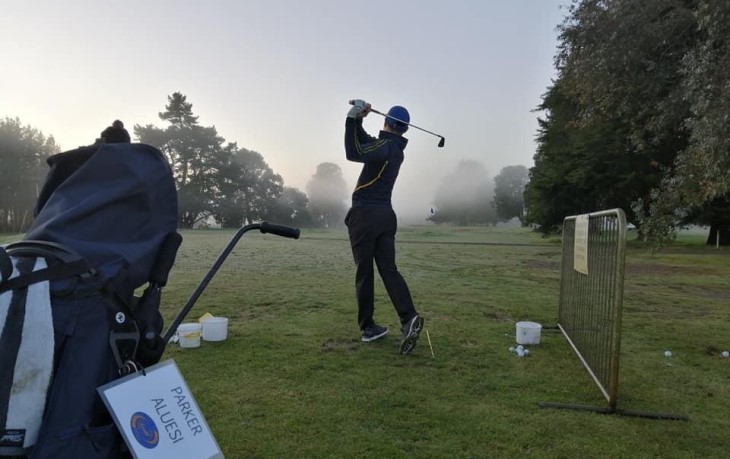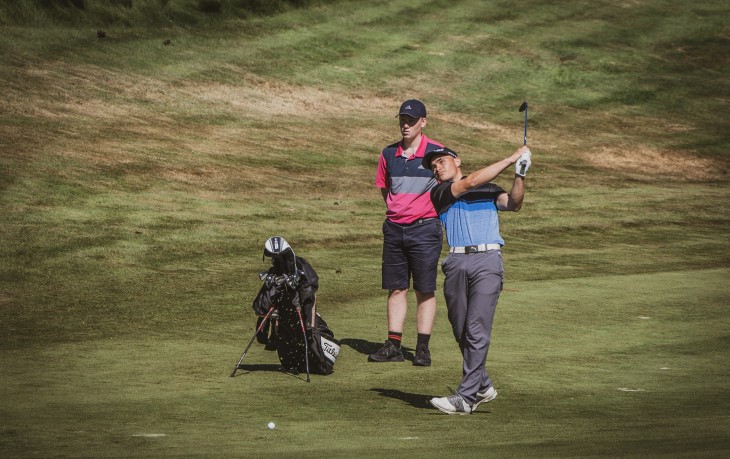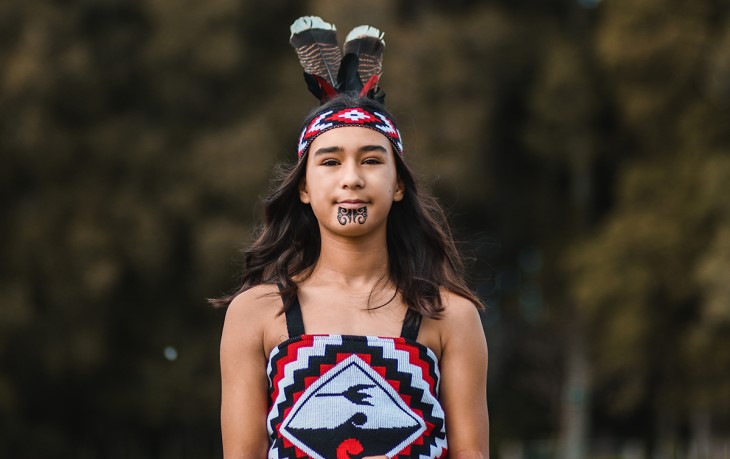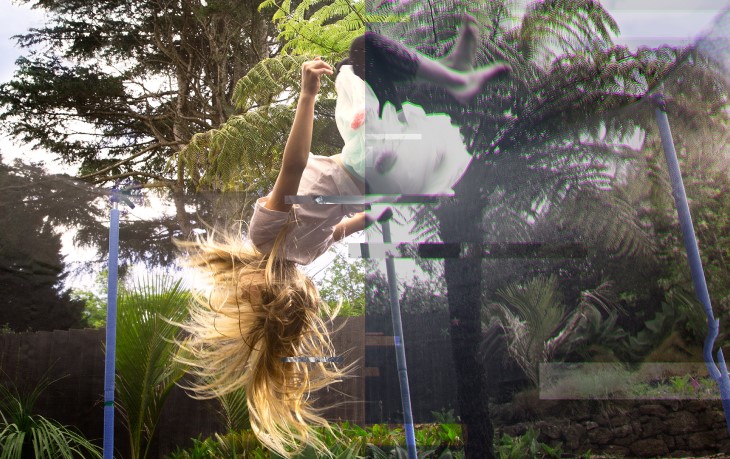From a childhood injury to teenage golfing success

From a distance, Parker Aluesi looks like any other golfer, but get a bit closer and you realise that his journey has been far from straightforward.
Parker Aluesi is standing on the first tee at the Millbrook Resort golf course and he can feel his heart beating in his chest.
It's the final round of the New Zealand Open in Queenstown and the Dunedin teenager is waiting to tee off in the inaugural NZ All Abilities Championship.
Parker knows everything about today is a step up. He's playing alongside the leading professionals in the NZ Open, Millbrook is in championship condition, the crowds are several thousand deep and he's surrounded by SKY Sport cameras capturing his every move.
"I remember being pretty nervous standing on the first tee, that was the biggest moment of my golfing career so far," says the 18-year-old.
Parker soaked up the occasion. He stormed home in the final round to finish as the leading Kiwi and runner-up to Jiri Janda from the Czech Republic by two strokes.
The truth is Parker has overcome much bigger challenges.
From a distance, he looks like any other golfer, but get a bit closer and you realise that his journey has been far from straightforward.
The accident
When he was six years old Parker went to a birthday party - which proved a life-changing moment.
During a treasure hunt with other children, Parker fell over backwards hitting his face on a metal pole sticking out of the ground.
"I remember it being a very scary and terrifying moment. I can't even imagine how hard it must have been for my Mum and Dad. It was awful."
Parker's parents rushed him to Dunedin Hospital and on arrival, he learned they had to remove his eye. He now has a glass eye.
"It all happened really quickly and it's a bit of a blur. But I remember it being a really hard time for our family."
ACC supported Parker in his doctor's appointments and his rehabilitation.

Back to the tee
Parker was determined to get back into golf.
His dad, Mike, had introduced Parker to the game when he was five. Not being able to see his target down the fairway or the hole on the green was tough going.
"At the start it was a real challenge and I had to trust a lot in my swing," he says.
"Putting was also a lot harder. I couldn't see where I was aiming. Over time I've been able to overcome that and now I just trust where I am aiming. It definitely impacted me a lot straight after the accident, but I've worked hard to overcome it."
Patrick Moore, the PGA Professional at the St Clair Golf Club, has been Parker's coach for the past four years and has seen considerable improvement in that time.
"In my whole time working with Parker he hasn't used his missing eye as an excuse at all," says Patrick.
"As he's grown, he has improved to the point now he is a solid scratch golfer and made the Otago 8-man this spring. He has done very well to overcome one eye. It has meant he's needed to be more deliberate when lining up. Most golfers with two eyes line up poorly so for Parker to get to the level he's at with one eye is remarkable."
Mike is one of Parker's best mates and he's played a huge role in his recovery.
"Dad is my biggest supporter," he says. "Anytime I play a tournament, he's right there on the bag or supporting me and that means a lot. It's great to have him there when I play considering he was the one that got me into the game."
Parker had set his sights again on the NZ All Abilities Championship in 2021 but was gutted to hear that the tournament has been cancelled due to COVID-19.
"I'd love to turn professional," he says. "That's the dream. It would be amazing playing on tour. I got a wee bit of a feel for what it's like and I'd love to do more of it. I know I have a long way to go."
That's all ahead of him. "I don't want my loss of sight to be an excuse. I just want to get on with life and keep doing the best that I can," he says.
"I pride myself on having a positive attitude and never giving up. I know what I am capable of and I stick to my game plan, and I take life as it comes."
Keeping tamariki safe
- Last year we helped over 200,000 tamariki in New Zealand recover from an injury.
- Falls caused nearly half of all child hospitalisations in the period 2013 to 2017.
- That amounted to more than 3,700 hospitalisations per year or 396 in every 100,000 children.
- Children aged 5 to 9 are at the greatest risk of fall-related injuries.
- Around 30 children aged 5 to 9 years were hospitalised for a fall-related injury per week.
- One-third of falls hospitalisations for this age group occurred at school, followed by 24% at home and 6% at a sporting or athletic ground.
We partner with Safekids Aotearoa who deliver the Home Safety programme. This helps reduce the number and severity of injuries to children at home.
Whare Kahikā is a free app to help you create a safe physical home environment for tamariki. It has a room-by-room checklist, where you can tick off what you already do well to keep your home safe, and suggests changes you can make to improve safety. It's available in te reo Māori and English as an app from Google Play Store and the App Store. There's also a web version on the Safekids website.




